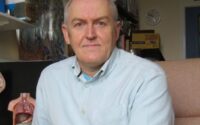Anna Eleanor Roosevelt Biography, Career, Early Life, Education, Net Worth, Career, Age 2025
Anna Eleanor Roosevelt Biography – Anna Eleanor Roosevelt was born on October 11, 1884, and died on November 7, 1962. She is remembered as one of the most influential women in American history. For twelve years (1933–1945) she served as First Lady of the United States while her husband, Franklin D. Roosevelt, was president. Even after leaving the White House, she kept working for human rights, women’s equality, and peace around the world. People called her “First Lady of the World” because of her work at the United Nations. This biography tells her story in a simple and clear way.
Profile
- Full Name: Anna Eleanor Roosevelt
- Date Of Birth: Born on October 11, 1884
- Spouse: Franklin Delano Roosevelt
- Children: Anna (born 1906), James (born 1907), Franklin Jr. (born and died 1909), Elliott (born 1910), Franklin Jr. (born 1914), John (born 1916)
Early Life
Eleanor was born in New York City into a rich and famous family. Her father, Elliott Roosevelt, was the younger brother of President Theodore Roosevelt. Her mother, Anna Hall, came from a high-society family. Sadly, her childhood was not happy. Her mother often called her “Granny” because she looked serious and old-fashioned. Her father loved her very much but struggled with alcohol and was away most of the time.
Tragedy came early. In 1892, when Eleanor was eight, her mother died of diphtheria. Her younger brother also died that same year. Two years later, in 1894, her father died. Eleanor and her surviving brother went to live with their strict grandmother, Mary Hall, in Tivoli, New York. Life there was quiet and lonely. Eleanor felt shy and ugly, but she read many books and dreamed of a better future.
Education
When Eleanor was fifteen, her grandmother sent her to Allenswood Academy, a girls’ school near London, England, in 1899. The headmistress, Marie Souvestre, became the most important teacher in Eleanor’s life. Marie was smart, independent, and cared about social problems. She took Eleanor on trips across Europe, taught her to speak French, and encouraged her to think for herself. These three years (1899–1902) changed Eleanor forever. She gained confidence and learned that women could lead and make a difference. When she returned to New York in 1902, she was ready to start her adult life.
Personal Life
On March 17, 1905, Eleanor married her distant cousin, Franklin Delano Roosevelt, in New York City. Her uncle, President Theodore Roosevelt, gave her away at the wedding. The couple had six children:
- Anna (born 1906)
- James (born 1907)
- Franklin Jr. (born and died 1909)
- Elliott (born 1910)
- Franklin Jr. (born 1914)
- John (born 1916)
Five children lived to adulthood. Franklin’s mother, Sara Delano Roosevelt, controlled much of the family money and decisions. Eleanor often felt pushed aside in her own home.
In 1918, Eleanor discovered that Franklin was having an affair with her social secretary, Lucy Mercer. This hurt her deeply. The couple decided not to divorce because of politics and family, but their marriage changed into a strong partnership instead of a romantic one. They respected and supported each other in work.
Eleanor had close friendships throughout her life, especially with women such as reporter Lorena Hickok and New York state trooper Earl Miller. Letters show deep affection, but historians agree these relationships were emotional friendships, not proven romantic affairs.
Net Worth
Eleanor Roosevelt never focused on personal wealth. She came from a rich family and married into another rich family. When Franklin died in 1945, Eleanor received income from family trusts. She earned money from writing books, newspaper columns (“My Day” ran six days a week from 1936 to 1962), radio shows, and lectures. At the time of her death in 1962, her estate was worth about $1 million (around $10 million in today’s money). She gave most of her money to charity and causes she believed in.
Career
Eleanor’s career was unusual because she created it herself.
Before 1933: She taught history and literature at a girls’ school in New York. She worked for women’s rights, helped poor immigrants, and supported labor unions. During World War I, she volunteered for the Red Cross and visited hospitals.
As First Lady (1933–1945): She traveled across America to see how people lived during the Great Depression. She held press conferences only for women reporters. She wrote a daily newspaper column called “My Day” that reached millions of readers. She pushed her husband and the government to help young people, women, and African Americans.
After 1945: President Harry Truman appointed her as a delegate to the new United Nations in 1945. From 1946 to 1952 she chaired the committee that wrote the Universal Declaration of Human Rights, adopted on December 10, 1948. She kept speaking and writing until her death.
Controversies
Eleanor spoke openly, so some people criticized her. She supported civil rights for African Americans when many white Americans did not. In 1939 she resigned from the Daughters of the American Revolution when they refused to let singer Marian Anderson perform in their hall because she was Black. Eleanor arranged for Anderson to sing at the Lincoln Memorial instead. Some people called her too liberal or said she talked too much about politics as First Lady. The FBI kept a file on her because of her friendship with labor leaders and young activists. None of the serious accusations against her were ever proven.
Legacy
Eleanor changed what it means to be First Lady. Before her, the job was mostly hosting parties. She showed that a president’s wife could fight for justice. The Universal Declaration of Human Rights remains one of the most important documents in the world. It has been translated into more than 500 languages. She helped start the idea that human rights belong to everyone, no matter where they are born. Schools, roads, and parks all over the world carry her name. In polls of historians, she is almost always ranked as the greatest First Lady in American history.
Conclusion
Eleanor Roosevelt started life as a shy, lonely child who felt she was not pretty or important. Through hard work, learning, and courage, she became a voice for millions of people who had no voice. Her favorite saying was, “Do one thing every day that scares you.” She lived that advice every day of her life. Her story teaches us that one person really can change the world for the better.
FAQs
When and where was Eleanor Roosevelt born?
October 11, 1884, in New York City.
How many children did she have?
Six children were born; five lived to be adults.
What is she most famous for at the United Nations?
Leading the team that wrote the Universal Declaration of Human Rights in 1948.
Did she ever run for political office herself?
No, she never ran for office, but she helped many candidates and served as a UN delegate.
When did Eleanor Roosevelt die?
November 7, 1962, at age 78 in New York City.
What was her famous daily newspaper column called?
“My Day,” published from 1936 to 1962.
Why did she resign from the DAR in 1939?
They refused to let African-American singer Marian Anderson perform in their hall.
Who was her famous uncle?
President Theodore Roosevelt.

